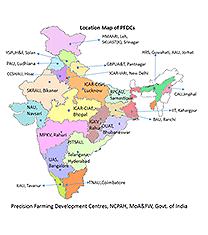
The Green Revolution with its emphasis on high yielding variety seeds, fertilisers, pesticides and better methods of farming, swept like a wave into the Indian countryside.It turned us from being deficient in food grains to being self sufficient.
But the increase in agricultural yield has to keep pace with the growing population. To remain self sufficient in food grains, we need another green revolution, or rather, a greener, revolution.Innovative agro practices need be adopted towards transformation of Indian agriculture - to precision farming practices which will result in stretching our agro input resources mani-fold to increase agricultural productivity both in quality and quantity.
Plasticulture applications are one of the most useful indirect agricultural inputs which, hold the promise to transform Indian agriculture and bring in the "Second Green Revolution"
What is Plasticulture?
Plasticulture is the use of plastics in agriculture, horticulture, water-management, food grains storage and related areas. A variety of plastics materials and end products are deployed in plasticulture applications - for water conservation, irrigation efficiency, crop and environment protection, as well as end product storage and transportation.
Why Plasticulture?
Plastics can play a major role in energy conservation. They require minimum energy in production and conversion to finished products. Plastics have definite advantages over conventional materials.
- Higher strength / weight ratio.
- Superior electrical properties.
- Superior thermal insulation properties.
- Excellent Corrosion resistance
- Superior flexibility.
- Impermeability to water, gas, etc.
- Resistance to chemicals.
- Less friction due to smoother surface.





